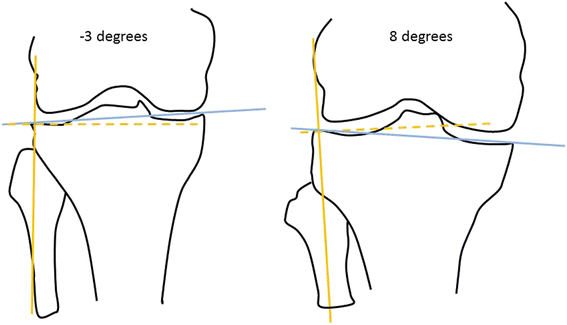Coronal tibial slope associated with accelerated knee osteoarthritis
Accelerated knee osteoarthritis may be a unique subset of knee osteoarthritis, which is associated with greater knee pain and disability. Identifying risk factors for accelerated knee osteoarthritis is vital to recognizing people who will develop accelerated knee osteoarthritis and initiating early interventions.

Evoke™ unloading knee brace
Jeffrey B. Driban, Alina C. Stout, Jeffrey Duryea, Grace H. Lo, William F. Harvey, Lori Lyn Price, Robert J. Ward, Charles B. Eaton, Mary F. Barbe, Bing Lu and Timothy E. McAlindon, BMC Musculoskeletal Disorders, 19 July 2016
The geometry of an articular surface (e.g., coronal tibial slope), which is a determinant of altered joint biomechanics, may be an important risk factor for incident accelerated knee osteoarthritis. We aimed to determine if baseline coronal tibial slope is associated with incident accelerated knee osteoarthritis or common knee osteoarthritis.
The geometry of an articular surface (e.g., tibial slope), which is a determinant of altered joint biomechanics, may be an important risk factor for incident accelerated knee osteoarthritis. For example, coronal tibial slope, which is defined by the slope from the lateral edge of the tibial plateau to the medial edge (see Fig. 1), is associated with abnormal lower extremity biomechanics.
A positive slope represents a more proximal lateral plateau than medial. A greater coronal tibial slope is associated with greater knee internal rotation excursions and a lower coronal tibial slope is associated with greater knee valgus angles during a landing task.
Hence, an altered coronal slope angle may play a role in joint loading and influence the risk of injury. Due to these abnormal biomechanics, it is important to consider the coronal tibial slope as a potential risk factor for incident accelerated knee osteoarthritis. No prior study has evaluated coronal tibial slope in relation to osteoarthritis.
 |
| Fig. 1. Examples of a positive and negative coronal tibial slope. The blue line connects the medial and lateral edges of the tibial plateau. The solid orange line is parallel to the longitudinal axis of the tibia and the dashed orange line is perpendicular to the longitudinal axis. A negative slope indicates that the lateral edge is lower than the medial edge of the plateau. A positive slope indicates that the lateral edge is more proximal than the medial edge of the plateau.[1] |
This is the first study to demonstrate that a greater coronal tibial slope is associated with incident accelerated knee osteoarthritis but not common knee osteoarthritis. Hence, the more proximal the lateral tibial plateau margin relative to the medial tibial plateau, the greater the risk for incident accelerated knee osteoarthritis, particularly among knees with mal-alignment. Based on post hoc analyses, coronal tibial slope may primarily relate with incident medial joint space narrowing and not lateral joint space narrowing.
In conclusion, coronal tibial slope, particularly among knees with mal-alignment, may be an important risk factor for incident accelerated knee osteoarthritis, which is a painful and disabling type of osteoarthritis. The slope measure may be a risk factor unique to incident accelerated knee osteoarthritis that may eventually help identify individuals at risk for incident accelerated knee osteoarthritis, particularly in the medial tibiofemoral compartment.
This builds on the existing literature that older age, greater body mass index, new knee injury, and coronal tibial slope may be important risk factors for incident accelerated knee osteoarthritis. Future research should account for coronal tibial slope and explore if coronal tibial slope interacts with combinations of other factors that alter joint loading (e.g., obesity with mal-alignment) to increase the risk of incident accelerated knee osteoarthritis.
art3A10.11862Fs12891-016-1158-9
Coronal tibial slope is associated with accelerated knee osteoarthritis: data from the Osteoarthritis Initiative, Jeffrey B. Driban, Alina C. Stout, Jeffrey Duryea, Grace H. Lo, William F. Harvey, Lori Lyn Price, Robert J. Ward, Charles B. Eaton, Mary F. Barbe, Bing Lu and Timothy E. McAlindon. BMC Musculoskeletal Disorders, 201617:299 DOI: 10.1186/s12891-016-1158-9
nihms634134
Association of knee injuries with accelerated knee osteoarthritis progression: data from the Osteoarthritis Initiative, Driban JB, Eaton CB, Lo GH, Ward RJ, Lu B, McAlindon TE. Arthritis Care Res (Hoboken). 2014 Nov;66(11):1673-9. doi: 10.1002/acr.22359
